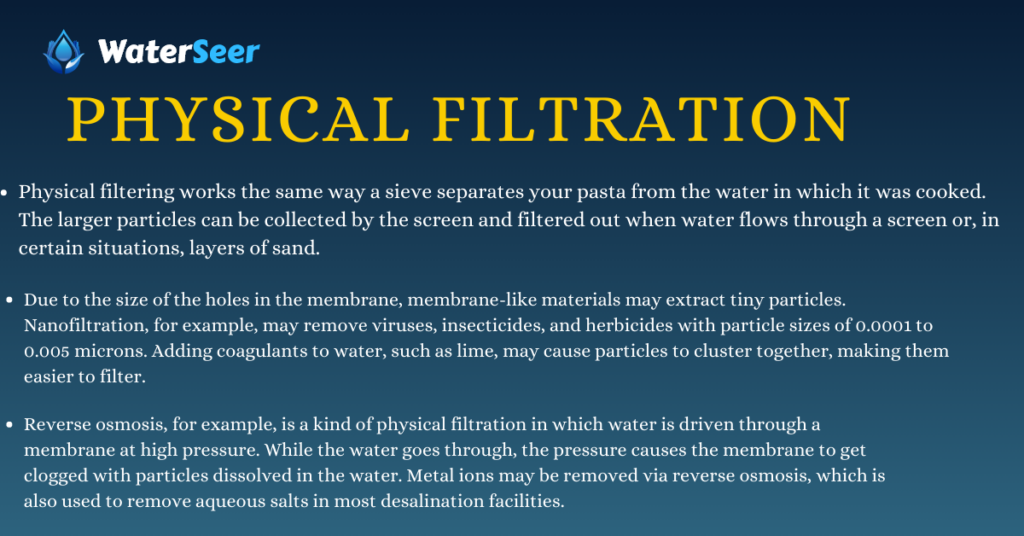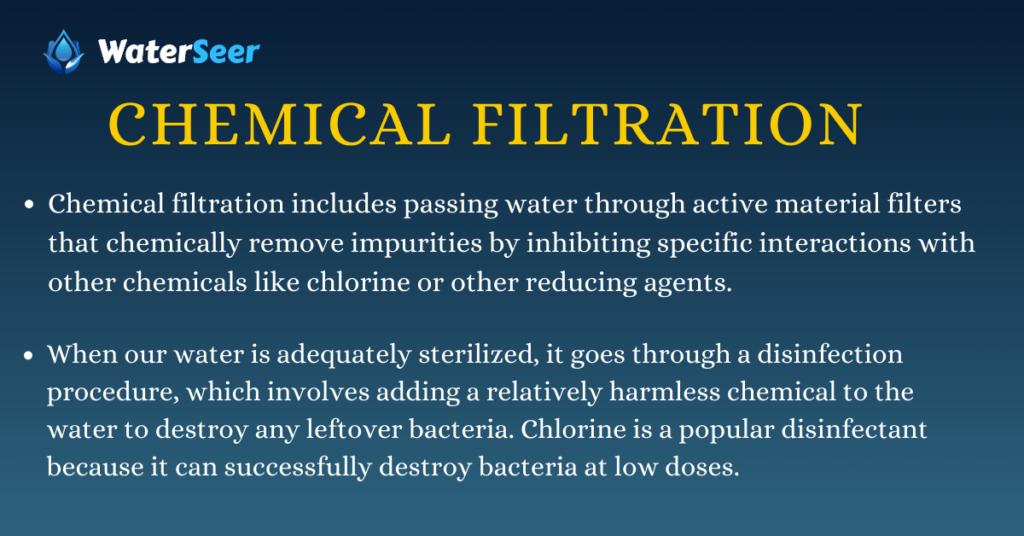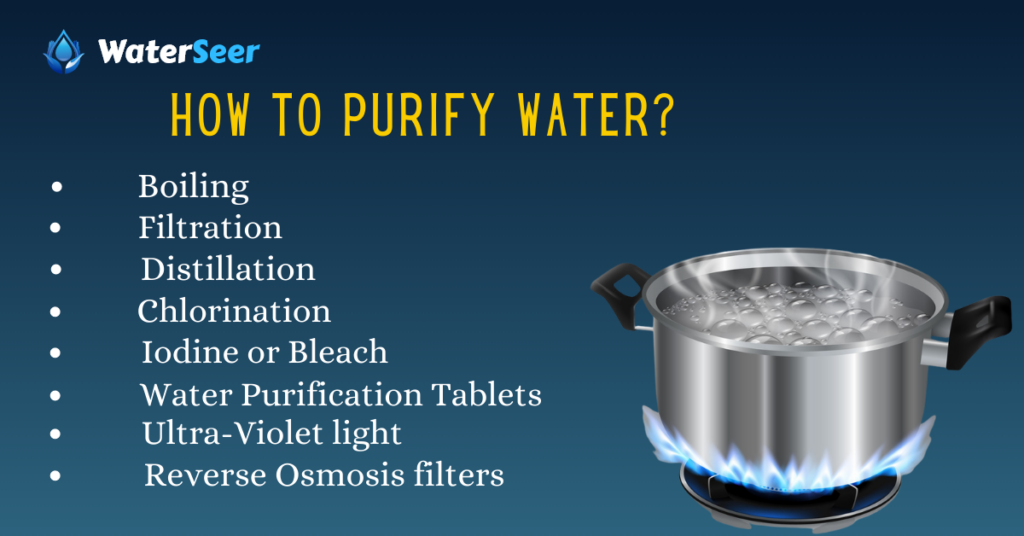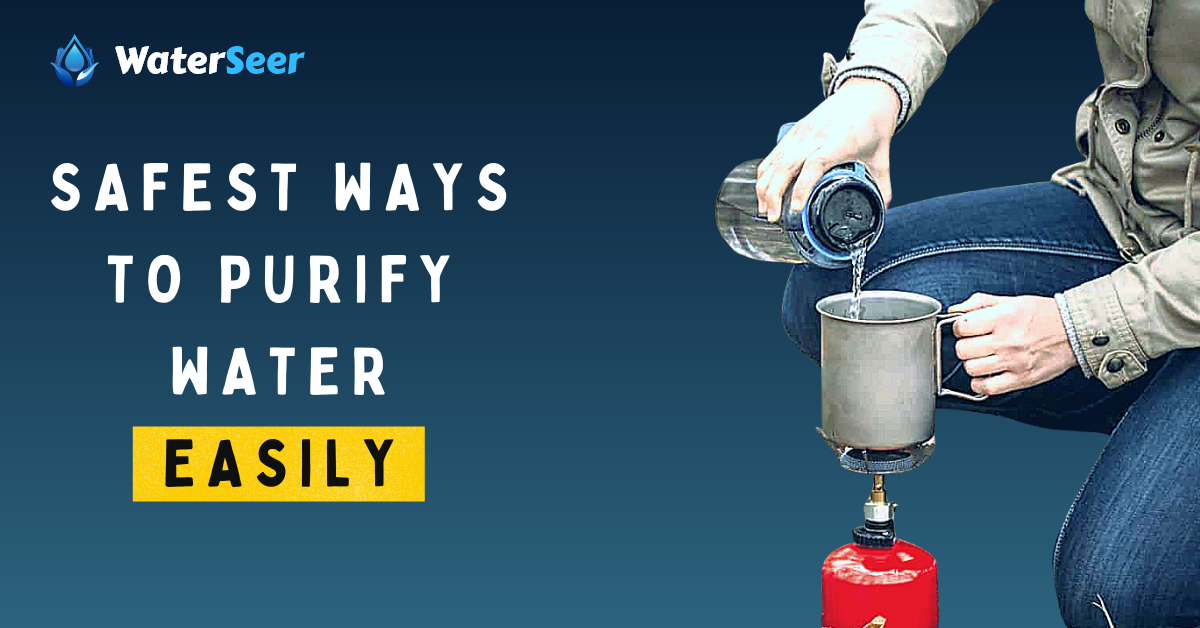These days, finding pure, clean, and safe drinking water is difficult. Population growth, industrial expansion, and environmental deterioration are all contributing factors. Because of this, it’s even more important to know how water is filtered and what kinds of water purifiers are there in the market; if we want to make sure we have clean drinking water.
The mechanism used by water filters and water purifiers are identical. They collect contaminated raw water, filter out impurities, including sediments and microbes, and supply clean water.
One big difference between the two is that a purifier can get rid of bacteria and viruses while a filter can’t. And to destroy or capture viruses, some purifiers employ chemicals, while others use an electrostatic charge.
Why Is Water Purification Important?
Although water includes several nutrients that are good for the body, drinking too much of it may cause a variety of problems. An excellent water purifier eliminates excess salts, suspended particles, and bacteria while preserving critical vitamins and minerals in the water.
Unfortunately, with so many manufacturers on the market these days, it’s difficult to tell which are good, which aren’t, and which meet the basic standards.
When it comes to filtration, there are two types of filtration, namely, physical filtration and chemical filtration.
1. Physical Filtration

Physical filtering works the same way a sieve separates your pasta from the water in which it was cooked. The larger particles can be collected by the screen and filtered out when water flows through a screen or, in certain situations, layers of sand.
Due to the size of the holes in the membrane, membrane-like materials may extract tiny particles. Nanofiltration, for example, may remove viruses, insecticides, and herbicides with particle sizes of 0.0001 to 0.005 microns. Adding coagulants to water, such as lime, may cause particles to cluster together, making them easier to filter.
Reverse osmosis, for example, is a kind of physical filtration in which water is driven through a membrane at high pressure. While the water goes through, the pressure causes the membrane to get clogged with particles dissolved in the water. Metal ions may be removed via reverse osmosis, which is also used to remove aqueous salts in most desalination facilities.
2. Chemical Filtration

Chemical filtration includes passing water through active material filters that chemically remove impurities by inhibiting specific interactions with other chemicals like chlorine or other reducing agents.
When our water is adequately sterilized, it goes through a disinfection procedure, which involves adding a relatively harmless chemical to the water to destroy any leftover bacteria. Chlorine is a popular disinfectant because it can successfully destroy bacteria at low doses.
How Does My Water Filter at Home Work?
The filters we usually find in our kitchens employ a mix of physical and chemical filtering processes, albeit the kind of filter in a pitcher differs from the one that connects to your faucet. Activated carbon granules, which are comparable to charcoal, are used in most household filters. Charcoal has numerous pores for trapping particles, but it must be replenished if those gaps get blocked with contaminants.
Ion exchange filtration, in which atoms in the water are split apart into ions or charged particles, is also often used in these filters. The filter then removes the harmful ions and replaces them with less bothersome ions. For example, this is how water softening works: the water filter traps magnesium and calcium ions and replaces them with sodium ions.
Also Read: 8 Best Whole House Water Filter System Reviews for 2022
How to Purify Water?

The following is the list of methods used for water purification along with its pros and cons:
1. Boiling
The most efficient and cost-effective method for purifying water is to boil it first. Unfortunately, the source or distribution systems for your water could be polluted. For example, parasites and bacteria are invisible to the human eye, yet their repercussions may be devastating.
Bring clean water to a raging boil and keep it there for 1-3 minutes. Those who live at higher elevations need to bring their water to a boil for a longer period of time than those who live at lower elevations. It is so, because, water boils at lower temperatures at higher elevations. Cover boiling water and let it cool down before drinking it. Give the water time to settle before you filter it to get clean water to drink.
- Simple to Use
- Materials are readily available
- Can purify huge volumes at once
- The process is time-consuming
- Needs fire
2. Filtration
Filtration is considered one of the best ways to clean water. It involves using different filters correctly, which makes the cleaning process of the water efficient. This method uses chemical and physical steps to clean water and make it safe for people to drink. Filtration is a quick and easy way to get rid of chemicals and small, harmful pollutants that can make you sick.
Since filtering doesn’t get rid of all the mineral salts, people think that filtered water is healthier than water that has been treated in other ways. It’s one of the best ways to clean water because it uses a chemical absorption process to get rid of things that shouldn’t be in the water.
Reverse osmosis is thought to be less effective than filtering when it comes to removing contaminants like chlorine and pesticides that are made up of much smaller molecules. Filtration is also cheaper than distillation and reverses osmosis because it doesn’t use as much energy. Since not much water is wasted during the filtration process, it is a cheap way to clean water.
- It is quick and easy to use
- Effective for debris as well as for bacteria and organism removal
- Filters need regular replacement
- The filtration process is not enough for large volumes.
3. Distillation
Distillation is a water purification process that uses heat to collect clean water as vapor. Because water has a lower boiling point than other pollutants and disease-causing substances in the water, this procedure is effective.
A heat source is used to heat water until it reaches the boiling point. The mixture is then allowed to boil until it completely vaporizes. The vapor is cooled by passing through a condenser. When vapor cools, it condenses into clear liquid water that is safe to drink. Other compounds with a higher boiling point settle to the bottom of the container as sediments.
This method works to get rid of bacteria, germs, salts, and heavy metals like lead, mercury, and arsenic. Distillation is best for people who have access to raw water that has not been treated.
There are good things and bad things about this method. One big problem is that it takes a long time to clean the water. A heat source is also needed for the purification to work. Even though there are now low-cost energy sources, distillation is still an expensive way to clean water. In addition, it only works to clean small amounts of water.
Also Read: What Is Distilled Water? Uses and Safety
- It removes all the contaminants in the water
- Complicated Process
- It takes a long time to process the water
- It requires the right equipment and knowledge
4. Chlorination
Chlorine is a powerful chemical that has long been used to purify drinking water. Chlorine is a very powerful water purifier. It kills bacteria, parasites, and other things that can make you sick. To clean water, you can use chlorine pills or chlorine in liquid form. Furthermore, using chlorine is a cheap and simple method to clean water.
Be careful when you use chlorine pills or liquid to treat drinking water. Before taking this product, people with thyroid problems, for example, should talk to a doctor. Furthermore, chlorine tablets must be used in hot water since they dissolve better in water that is at least 21 degrees Celsius.
By killing all of the bacteria in your water, chlorine pills make them safe to drink.
- Easy Application
- Storing it is easy
- Treated water tastes different
- It takes some to work
5. Iodine or Bleach
We’re sometimes caught off guard by an unfavorable situation, which means we have to make do with what we have. Fortunately, several everyday home items may act as excellent water filters. They may not produce the best-tasting water, but it is safe to drink and will not make you sick.
One of the most popular chemicals used to cleanse water is bleach. Add 1/8 teaspoon to a gallon to make clear water or roughly eight drops. If the water seems hazy, add a few more drops of bleach. In this situation, a quarter-teaspoon, or around 16 drops per gallon, would be enough.
Iodine is another ubiquitous chemical that may be used to filter water and is present in most people’s medicine cabinets. Because iodine is light sensitive, it should always be kept in a dark container, ideally in a dark location.
Otherwise, your iodine may get contaminated and be less effective. If your water is clear, use five drops of iodine per quart or 20 drops per gallon. If the water is murky, you’ll need twice as much iodine to filter it, or 40 drops per gallon.
- This chemical is easier to find
- It best suited for emergency use
- Water taste gets affected
- Difficulty in drinking this water.
6. Water Purification Tablets
Water purification tablets are simple to use approach for purifying water. They are little pills that come in a compact container and provide numerous purifying dosages in a small, convenient package to carry and store. They’re also reasonably priced. However, their shelf life is short.
Put the required number of pills into your water bottle and wait for them to perform their magic. Sediment won’t be filtered out, so you’ll need to do that yourself if you want to drink the water. Still, any potentially hazardous microbes and bacteria will be removed.
- Easy to use
- Easy to store
- Best for treks and hiking
- It tastes different than normal water
- Short shelf life
- It needs some time to work
7. Ultra-Violet light
A UV filter is a compact, portable, contemporary water filter. This little lightbulb is submerged in water and generates a powerful UV light that destroys everything in the water. After a UV treatment, your water is perfectly safe to drink, but it may still include sediment since this does not filter silt out of the water. You’ll also need to keep an eye on the battery life since it won’t help you much if the batteries die while you’re in critical need of water!
- Works fast
- Expensive
- Battery Reliant
- It fails to filter sediments
8. Reverse Osmosis Filters
A reverse osmosis (RO) system uses active carbon and particle filtration to filter water in many stages. The water from the tap has to go through a membrane with very small holes, which gets rid of minerals and microorganisms. The waste is then flushed from the system via an exit pipe. An RO water filter improves the taste of water. Still, it is impossible to declare that the water is completely safe since germs may enter through holes in the filter (either to a manufacturing flaw or normal wear and tear).
RO filters are best suited for places where water has a high concentration of dissolved minerals. The downside of a RO purifier is that the membranes in these filters may also take away some vital minerals. It also needs a constant water supply and can only be connected to one water tap.
It gets rid of the most contaminants, is safer and better for the environment than bottled water, and gives you better water for cooking.
- It filters almost all contaminates
- As compared to bottled water, it is ecofriendly
- Provides better water for cooking
- Water wastage in the filtration process
- Some noticeable pressure drop
- Wastewater requires proper disposal
Conclusion
Before you drink water, you should make sure that it has been cleaned or treated. If you want to find the best ways to clean your water, WaterSeer is the best place to get advice on the best ways to do so and custom solutions to your water cleaning needs.

